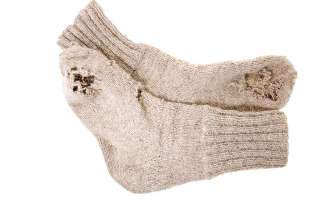Science magazine for children: Packed with science stories, science facts, science features, and other science learning resources for children. Discover the known, the unknown, and little-known facts in our science articles. Learn the how and why of everyday things and explore rare and exotic living species.
358 items in this section. Displaying page 22 of 36
How can We Use Water to run Cars?
Huge amounts of polluting gases are being released into the earth’s atmosphere by the large scale burning of fossil fuels or natural fuels found under the earth. These gases are the main culprits behind the phenomenon of global warming and other climatic changes. In order to find cleaner fuels, scientists around the world are trying to find a fuel or source of energy which produces little or no pollution on being burnt. Quite amazingly, a new technology points out that water can be used to generate electricity....
Excerpts From 'The world of trees'
This is a remarkable book on trees – trees which are not just ‘described’ to you in words as having branches, leaves and sweet-smelling flowers, but trees which you can actually ‘see’ as you read. Big trees, tall trees, stately trees….all come alive with the cries and activities of the numerous birds and insects living on them, the age old myths associated with them and the author’s personal comments, witty and insightful. Indeed, in many places, especially in villages in India, trees are quite inseparable from the way of life of the people....
Why do Woollens Get Holes?
Most people think moths are responsible for eating up our woollen clothes, furs and rugs and making holes in them. This is because when we open these boxes in spring, a number of moths fly out. Don’t you believe it! Moths do not eat wool. It is the larvae (caterpillar) of certain moths that cause holes in our woollens. Caterpillars feed on wool, furs and other fabrics and damage them. But where do these caterpillars come from?...
What are Volcanic Tubeworms?
In order to raise chicks the farmer keeps the eggs warm and is careful not to crush them. But when scientists in the University of Southern California rear tubeworms, they keep the immature worms very cold and under high pressure. You would think the scientists are being cruel by subjecting these little worms to such extreme conditions. They are not. The worms can thrive only under these circumstances, because they live in the deep sea where it is very cold....
Who stole the Candle Wax?
On every Diwali, known as the festival of lights, our family has a big discussion on the kind of lighting we should have. And after talking about candles or electric bulbs we invariably choose the _diya_s or earthen lamps for their beautiful flames. But last year, we reached the kumhara or potter’s roadside shop a bit too late. The lamps had been sold out and the potter had a big smile on his face. So we decided to light candles....
What are Dry Clouds?
It is that time of the year when all of us look to the sky, waiting for the first drops of rain to fall on our faces. We wish the monsoon would come soon. But for people who live in polluted cities like Delhi or Tokyo, there’s some bad news. Israeli scientists have discovered that air pollution may actually stop rain from falling. To know how pollution may prevent rain from falling, it is necessary to know how and when rain falls....
What is an Orca?
If you have seen the movie Free Willy, you would be able to instantly recognise an Orca. Willy is an Orca or a killer whale. Orcas (Orcinus orca) are mammals classified under the order Cetacea. Though they are called killer whales, they belong to the dolphin family. Like other whales and dolphins, they, too, come up to the surface to take in oxygen. Orcas can be found in all the oceans of the world. Orcas are found in pods which is the collective term for these animals like ‘a gaggle” for geese or ‘school’ for fish....
What are Truffles?
Every year, between November and March, people in southern France and Italy are busy trampling the woods, sniffing the air and peering under the roots of elm and oak trees looking for truffles. Truffles? Hey, its no trifling matter – there are organisations in France and Italy which let you take part in truffle hunts! Truffles are a rare and delicate type of edible mushrooms that look like little potato nuggets. They grow in open woodlands in regions with a warm and moderate climate, on soil rich in calcium or limestone....
Who is the real McCoy?
Ever heard the expression, is that the “real McCoy?” No, its not the musical group we are talking about. Real McCoy is actually a reference to one of America’s most prolific inventors, Elijah McCoy. McCoy invented and patented all kinds of mechanical things to help them work smoothly, efficiently and safely. Over time, the expression “real McCoy” has been used for anything that means the real thing, the real solution. Elijah McCoy Elijah McCoy was born in 1843 at Colchester, in Ontario, Canada to George and Mildred McCoy....
Jellyfish: Fragile Creature of the Sea
A sudden influx of jellyfish, in the Gulf of Mexico in the Atlantic Ocean is worrying both scientists and fisher folk alike. The Gulf of Mexico is bordered on the north by the United States, on the east by Cuba, and on the south and west by Mexico. Fragile Creature of the Sea [Illustration by Sudheer Nath] Jellyfishes are invertebrates (animals without a spinal column). Some are also venomous and their sting can cause paralysis....







